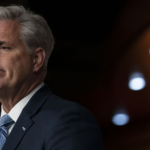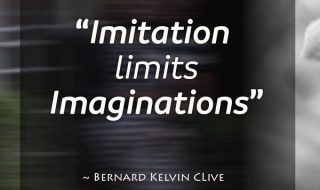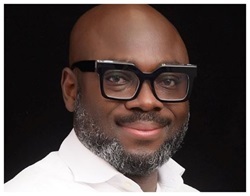
Is your local bank part of Wall Street? What about your mortgage or car-loan issuer? Your credit-card company? Your life insurance carrier?
With a populist presidential election in full outrage mode, Wall Street is squarely in the crosshairs, vilified by candidates ranging from Bernie Sanders to Ted Cruz, along with millions of angry voters. “The business model of Wall Street is fraud,” Sanders likes to say, tarring an industry that employs 8 million Americans. Judging by Sanders’ rousing success in the New Hampshire primary, his message has found a ready audience.
Thing is, there’s no single definition of “Wall Street,” and broadly understood, it encompasses local bankers helping fund Main Street delis and barbershops, as well as the most voracious corporate raiders and insider traders. “The professionals in the business would define Wall Street as the wholesale sector of the global financial marketplace, including transactions in securities, syndicated bank loans, and various other financial products that occur between large corporations, governments and banks,” says Roy Smith, professor at New York University’s Stern School of Business. “This is not confined to the four block radius of Wall Street in New York City. It’s a global thing.”
That definition implicates a few presidential candidates as Wall Street coconspirators. On the Republican side, John Kasich worked for Lehman Brothers in Columbus, Ohio from 2001 to 2008, the year Lehman collapsed. Jeb Bush was an adviser to Lehman and to the firm that bought some of its assets, Barclays (BCS). And Ted Cruz’s wife Heidi is a Goldman Sachs (GS) executive in Houston (on leave while her husband runs for president). As for Democrats, Hillary Clinton earned nearly $4 million from 16 speeches she gave to financial firms between 2013 and 2015, a rich payday that some critics take as evidence that Clinton is an honorary banker—a major liability, in the current climate.
Are those candidates closer to the heart of Wall Street, or the fringe? Where does Wall Street start and end, anyway? To clarify, we present the Yahoo Finance Wall Street Perfidy Ratings, a best-to-worst breakdown of various elements of the financial industry—and the amount of anger ordinary Americans can justifiably feel toward each. Here are the biggest components of Wall Street, writ large:
Community banks. Perfidy rating: Minimum. These are relatively small institutions such as First State Bank or Family Federal Savings that mostly do traditional banking and avoid the kinds of exotic investments that can cause trouble. Political target? Not really. The Jimmy Stewart character George Bailey from “It’s a Wonderful Life” was a community banker, forever waving a flag for the profession.
Financial advisors. Minimum. They can work out of their own shop or represent a big firm such as Citigroup (C) or UBS (UBS). Mostly they help ordinary people invest their money, and can be valued professionals as long as they don’t steer clients to subpar products in return for larger fees. Political target? Not really.
Broker-dealers. Minimum. These firms, with mostly unknown names, execute stock and bond trades placed by investors, whether individuals or big asset managers. They also trade for their own benefit sometimes. MF Global was a broker-dealer that went bankrupt in 2011—an event that showed this part of the system working the way it’s supposed to, since MF Global didn’t require a bailout or threaten the broader financial system; instead, it was a contained collapse in which investors taking risks bore the cost of those risks. Political target? Possibly. If there are new taxes on the financial industry, they could come in the form of transaction fees, which could affect broker-dealers.
Asset managers. Minimum. Think Fidelity, Vanguard or BlackRock (BLK). These firms manage money and certainly take risks on behalf of clients comfortable doing so. But they don’t traffic heavily in exotic securities and they didn’t require bailouts in 2008. Political target? Maybe. Some analysts worry that a few of these firms now control so much money they should be regulated more tightly.
Venture capital firms. Minimum. Big players such as Kleiner Perkins and Andreesen Horowitz raise private money to invest in startups, hoping to cash in once they become the next Google (GOOGL), Facebook (FB) or Uber. While they don’t like it, they’re used to losing their own money on startups that don’t make it, with no reliance on taxpayers. Political target? Not really, since VC firms are associated with the Silicon Valley tech hub, the most booming part of the economy.
Insurance companies. Perfidy rating: Medium. These qualify as financial firms because they have huge pools of money, drawn from the premiums people pay, that need to be invested. Most insurance firms are conservative, but AIG (AIG) got into huge trouble during the 2008 meltdown by gambling on risky securities it shouldn’t have been involved with. The 2008 AIG bailout required far more money than any of the banks that got federal aid. Political target? Yes. Insurers complain that they’re being treated too much like banks and are subject to too much regulation. Policymakers don’t seem to care.
Nonbank lenders. Medium. General Electric (GE) had a huge lending arm, GE Capital—which it is selling to Wells Fargo (WFC)—that got the whole company deep into trouble in 2008. Same with GMAC, which was part-owned by General Motors (GM) at the time and is now the independent business known as Ally Financial (ALLY). There’s a valid place for such firms, but the financial crisis showed they can cause a lot of damage when not regulated like banks. Political target? Yes, but many of these companies are preempting political action by simply getting out of the lending business.
Investment banks. Medium. The glamorous part of the financial industry, these handle mergers, acquisitions, public offerings, bond issues and other matters essential to the corporate world. Goldman Sachs and Morgan Stanley (MS) used to be the two biggest investment banking names, but in 2008 they morphed into commercial banks to take advantage of federal aid. Most big commercial banks these days have an investment banking unit, though there are still standalone IBs such as Evercore Partners (EVR), Jeffries and KBW. These firms are sometimes controversial, but investment banks were not the primary cause of the 2008 financial crisis. Political target? Yes. These firms still make a ton of money, which makes them one of the first places politicians will look if they choose to raise taxes or other types of revenue.
Hedge funds. Medium. Hedge funds aren’t banks and they’re not backed by any taxpayer guarantees. But these privately managed funds, which can invest in just about anything, are considered a key part of the “shadow banking” system that operates similar to banks by lending money and investing on behalf of clients. The industry points out accurately that no hedge funds required bailouts in 2008. And when things do go south, hedge funds typically just shut down, with losses borne by investors. Still, hedge funds raise hackles because successful managers can become outrageously wealthy, with impresarios such as Paul Singer, Ken Griffin, James Simons and Ray Dalio among the most prolific political donors, giving millions of dollars to super PACs. Political target? Yes, since they’re a poorly understood part of the shadow banking system associated with gargantuan profits that go to a select few.
Private equity firms. Medium. Another big part of the shadow-banking system, outfits such as the Blackstone Group (BX), the Carlyle Group and Bain Capital typically raise large pools of money from investors that they use to buy big assets, such as troubled companies, where they think they can get strong returns. PE firms are controversial for the huge fees they charge and the deep cutting they often do at companies they buy. But like hedge funds, they typically bear their own losses and didn’t require bailouts in 2008. Political target? Yes. When you hear politicians talk about closing the “carried interest” loophole, they’re talking about a tax break that mostly benefits PE firms.
Government-sponsored enterprises, or GSEs. Maximum. The biggest GSEs are Fannie Mae (FNMA) and Freddie Mac (FMCC), which had a huge role in the financial meltdown because they backed billions of dollars worth of mortgages that should have been sound but were destined to default. Fannie and Freddie were the two biggest bailouts of the whole crisis, and they’re still run completely by the government. There are several plans to spin them off or wind them down, but none seems close to going into effect. Political target? Not any more, since the GSEs were essentially nationalized in 2009.
Commerical banks. Maximum. Big banks such as Bank of America (BAC), Citigroup, Goldman Sachs and Morgan Stanley didn’t used to be terribly controversial, but the 1999 repeal of a law that strictly governed what banks can do led nearly every big bank to become a crazy mashup of retail banking, investment banking, proprietary investing, credit issuance and all sorts of other things. Commercial banks took the lion’s share of bailout money in 2008. Congress passed new rules governing what banks can do in 2010, but the mashup model still prevails and big banks remain a fat target for populist politicians. Political target? A huge one. These are the banks Sanders wants to break up, so that they’d either do traditional banking or riskier types of investing not backed by govenrment guaranties — but not both, as they do now.
As for the candidates, we judge anybody to have worked for one of the big banks to be a card-carrying member of Wall Street, since the business is defined by what it does (move huge amounts of money around), not where it is (Columbus, Houston, wherever). And Clinton was effectively a contractor to the Wall Street firms she spoke to for lavish sums. Let the voters judge how much that matters.
Source: Rick Newman Follow him on Twitter: @rickjnewman.
















